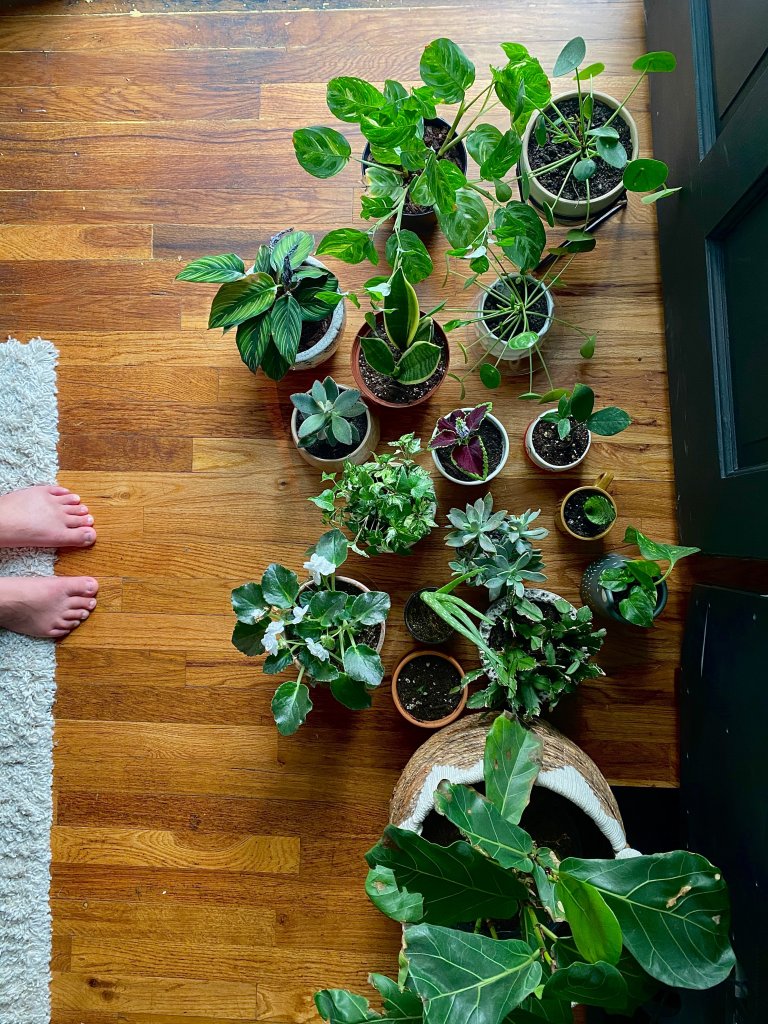Choosing the correct houseplants for your home can be a daunting task. Not only do you have to worry about the plants’ care and maintenance, but you also need to take into account the climate and environment of your home. In this article, we will discuss some tips on how to choose the right plants for your space, as well as how to care for them once you’ve brought them home.
Stylish And Decorative
You should also consider if the plant’s color and size will fit your interior style. For example, if you have linen curtains everywhere it might be better to choose flowering plants instead of cacti and shallow root plants.
Lighting Considerations
Most plants require at least some form of light to survive, but not all plants handle low-light conditions equally. Some plants grow in full sun, while others prefer deep shade. What’s more is that some plants need high levels of light (such as sunlight through a window), while other plants will only thrive in low-light situations.
When selecting houseplants, it’s important to know the lighting requirements of each specific plant you are considering. This will help ensure that your plants not only survive but also continue thriving. In addition to consistent and adequate sunlight, keep in mind the type of artificial lighting your home is equipped with. For example, incandescent or halogen bulbs may not provide enough lighting for certain types of houseplants.
Many times, the environmental conditions in your home are simply too harsh for many plants. However, there are some plants that have adapted to low-light conditions so well that they do quite well in homes with no direct sunlight at all. These plants are typically categorized as shade plants.
Soil Type
The variety of soil in your home can also impact which plants you should bring into your space. For example, if you have alkaline soil, then it might be difficult to find shrubs that survive in these conditions. On the other hand, acidic soils are typically more hospitable to a greater number of plant varieties.
In addition to the soil’s pH, its texture also plays a role in which types of plants you can grow. Plants that require fast-draining soils, such as succulents and cacti, fare better in coarse soil with larger particles. Meanwhile, plants that prefer slow-draining soils will flourish if placed in the soil with smaller particles, such as peat.
Plant Geography And Habit
The last factor to consider when selecting houseplants is the plant’s native region and habitat. For example, plants that are commonly found in tropical regions tend to require more moisture than desert plants. Likewise, some plants grow well together if they share similar native regions.
For example, the Peace Lily is a popular shade-loving houseplant that flourishes in moist environments. Therefore, it does quite well with other plants from tropical climates such as the Areca Palm and the Dracaena Plant. Likewise, cacti and succulents do well together because they are all desert dwellers.
Plants Placements
Once you’ve selected the type of plants that will thrive in your conditions, you’ll need to place them accordingly. There are several things to consider when placing houseplants, such as:
– Sunlight and shade
– Pot height and decorations
– Temperature and humidity
Ensuring proper sunlight is one of the most important factors in keeping houseplants healthy. It’s important to note that not all plants need sunlight to survive, but many do require bright light throughout the day.
As we mentioned earlier, if you don’t have access to a window with consistent and adequate sunlight, then it might be difficult to grow certain types of plants indoors. That doesn’t mean that these types of plants are impossible to grow, though. If you only have access to low light conditions, then low-light houseplants are your best bet.
The height of the pot is also important when planning where to place a houseplant indoors. You will want to make sure that there’s enough room for each plant’s eventual size and full height. If the plant will eventually grow taller than the pot’s height, then you might need to place it in a larger or deeper pot once it outgrows its current pot.
If there are any decorations near where your houseplant is placed, consider how these items might impact its growth and health. Some types of plants produce delicate flowers that might not do well if they are constantly crushed or bumped into. Likewise, some plants have sharp leaves that can damage certain types of household objects.
In the end, choosing the best plants for your home’s conditions is a matter of understanding what types of plants can thrive indoors. After that, it’s a matter of matching those plants’ requirements to the environmental factors inside your home. With a little research and some patience, you’ll be able to create a lush garden right in your living room.

